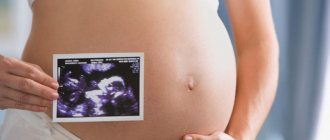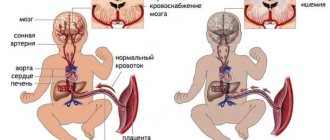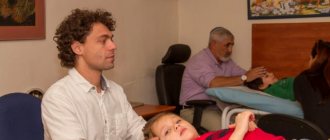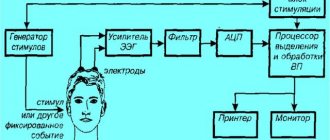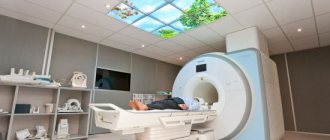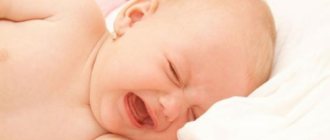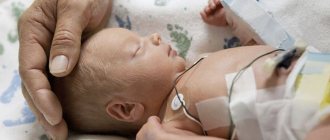Pathological reflexes are a group of reflexes that occur due to damage to the main neuron located in the center of the brain, the neural pathways leading to the spinal cord, or to the sections of the nuclei of the cranial nerves responsible for movement. As a result of the disturbances that arise during the lesion, new connections appear between physical sensations and responses of the body that do not correspond to the norm. That is, the body's reaction to physical contact is inadequate compared to the reaction of a normal person.
Reflexes that occur when a central neuron is damaged may indicate the presence of various mental and neurological diseases.
In children under 2 years of age, some reflexes considered pathological in older age are considered normal, for example:
- extensor-plantar;
- sucking (palm-oral);
- prehensile;
- other.
Parents should remember that all reflexes of newborns and children under 2 years of age are considered normal, characterize the immaturity of the nervous system and shape the development of the child’s brain.
The absence of some reflexes in newborns may indicate some kind of abnormality. And vice versa, if these same reflexes do not gradually fade away, then it is worth showing the child to the doctor as early as possible.
The sooner treatment is started, the greater the child’s chances of becoming healthy and healthy in the future.
Causes of pathological reflexes in humans in neurology
The causes of pathological reflexes in neurology can be various lesions of the brain and central nervous system. Namely:
- Cerebral palsy is a congenital disease in which the reflexes of newborns do not fade, but continue to develop.
- Stroke, damage to blood vessels and brain.
- Hypoxia is the lack of oxygen supply to the brain, as a result of which it ceases to perform its functions.
- Infectious diseases of the cerebral cortex, spinal cord, tumors.
- Coma state.
- Paralysis.
- Consequences of injuries.
- Hypertension.
Pathological, unhealthy reflexes can cause any damage to the nervous system, neural connections, the brain or its parts. They are congenital and acquired
Classification of pathological reflexes into groups, accepted in modern medicine:
- upper limb reflexes,
- lower extremities;
- oral muscles.
Carpal pathological reflexes are inadequate reactions of the upper extremities to external stimuli, such as tapping with a hammer.
They may be accompanied by the following actions:
- Grasping and holding an object is involuntary (grasping reflex, Yanishevsky-Bekhterev reflex or simply Yanishevsky).
- They can occur when the inside of the palm is irritated at the very base of the fingers.
Pathological foot reflexes are characterized by the following responses of the feet to tapping with a hammer:
- A blow to the phalanges of the toes from the side of the sole leads to extension of the main phalanges of the toes, and the terminal phalanges to flexion (Rossolimo reflex). Normally, it should be absent in healthy children aged three years and older;
- A blow to the sole leads to bending of all phalanges (Zhukovsky-Kornily reflex);
- Tapping the base from the side causes the sole of the foot to flex.
Dynamic gymnastics for children
- fence - pipe (frog - elephant)
- open and close your mouth, slap your lips, making a soft sound
- “air kiss”, we stretch our lips forward (as for a kiss) - then we retract our cheeks so that the corners of our mouth touch, like a fish’s
- bite the upper lip, then the lower, “comb your lips”
- smile - tube
- the house is open - closed, close your lips, straining them, open your mouth wide, relaxing, show first the upper lips, then the lower ones, then all at once, a fence
- make faces - move your jaw left and right
- snout - tube
- window - house open - tube - fence - O - A - U - I
- charge for the trunk, twist the tube clockwise and counterclockwise, down, left and right. Look at the elephant, how it moves its trunk.
Synkinesis
Synkinesis are reflexes in which the movement of one of the limbs results in symmetrical movement of the paired or diagonal limb. There are normal and pathological. Moreover, pathological ones have the following division:
- Global: when the leg is bent, the arm is extended, or vice versa.
- Imitation: repetition of involuntary movements of healthy limbs by unhealthy ones.
- Coordination: the implementation of a number of involuntary movements by unhealthy limbs.
Static exercises of articulatory gymnastics
- tube with lips, also called “trunk” or “elephant”, lips stretch forward, as when pronouncing the sound U
- fence, open smile, show teeth, as when pronouncing the sound I
- closed smile with just lips
- the house is open, also called “window”, open your mouth wide - “open the window in the house”
- the house is closed - lips together, pressed tightly
- lock, cover the lower lip with the upper lip, which is pulled slightly into the mouth
- key, on the contrary, lower upper
- Whoa, close your lips, stretch them forward slightly and make a vibrating sound
- show your upper teeth, raise your upper lip and show your upper teeth
- show your lower teeth, lower your upper lip, pull back your lower lip
- snout, pull your lips forward, widen them slightly
- mouthpiece, also called “window” or “donut”, lips as when pronouncing O
The road to recovery
Treatment of pathological reflexes in neurology is quite complex. Pathological reflexes are not a specific diagnosis, but just symptoms of a wide variety of diseases. They may indicate various disorders of the brain and nervous system, but cannot clearly indicate a diagnosis. First of all, it is necessary to establish the cause of the disease. It is this cause and diagnosis that needs to be treated.
Gymnastics in a playful way
Breathing games go well with these exercises. The kid doesn't want to study, let's play. He doesn’t want to close G, so we blow the cotton wool off his palm and show him how fun it is to do “pfft,” as if a butterfly had fluttered from his palm. You need to raise the lower G - put some cotton wool on your nose and blow from your lower lip. The horse gallops, we click our tongue and then it stops, “trrrr”, it doesn’t work, we play on our lips like a balalaika.
The game with soap bubbles goes well. It’s very fun to watch them fly, shimmering with rainbow stains. “Now blow it yourself!” - tell the baby. It may not work out right away, it’s okay, encourage the child. Take turns blowing with him, he either catches them with his hands or blows. You can also move your hand around the ring and the bubbles will also fly away.
Toys such as a harmonica, a pipe, a whistle, and various pipes and whistles can also help. as well as inflating balloons. Of course, this requires more complex skills, well-trained G muscles, the ability to hold a toy with your lips and at the same time draw in air and exhale without releasing the object from your mouth. Therefore, it’s okay if at first the pipe falls out along with the exhalation, and air is drawn in from the ball, this will work out over time.
Prevention of pathological reflexes
Unfortunately, modern science has not fully learned to predict the occurrence of problems with nervous system disorders during pregnancy, so no one is immune from genetic predisposition, mutation and unfortunate circumstances. But there are still preventive measures that are relevant to prevent or reduce the likelihood of diseases associated with paralysis:
- Complete exclusion of alcohol, caffeinated and energy drinks.
- To give up smoking.
- Sports, walking. An active lifestyle is the best help in maintaining health.
- Control of chronic heart and vascular diseases, timely treatment.
- Proper nutrition that does not contain animal fats or artificial additives.
For any mental abnormalities, involuntary muscle reactions, disturbances in normal sleep, excessive nervousness, heart pain, frequent migraines, an examination by a neurologist is necessary. These are all symptoms that can lead to serious illness, disruption of neural circuits and connections between body movement and brain reactions. Timely consultation with a doctor is the key to not only the physical, but also the internal state of the body. After all, the brain is the basis, without the functioning of which any body simply turns into a lifeless shell, similar to a plant.
Rate this article:
(votes: 1 , average: 5.00 out of 5)
Loading...
Related posts:
- Basic examples, signs and features of the classification of unconditioned reflexes
- Conditioned reflex: mechanisms of formation and classification of acquired reactions
- The main features of the manifestation of obligatory reflexes in newborns
- The main features of the manifestation of the Moro reflex in newborns
- What is included in the classification of reflexes?
- What are the consequences of a violation of the knee reflex of vital functions?
Diagnostic measures
Tourette syndrome is diagnosed if motor and vocal tics are present. Since the genetic etiology of the disease has been determined, its symptoms are observed at an early age, at a time when children cannot independently maintain control over their condition through volitional efforts. This pathology is characterized by several stages of development.
The first stage is manifested by rare tics, with an interval of two minutes. Such manifestations are not very pronounced, they cannot always be seen by strangers, and they do not negatively affect a person’s quality of life. At this stage of lip development, a person does not make a tube as often as, for example, blinking or frowning, while he tries to disguise such manifestations. He can control his condition himself, so treatment is not indicated at this stage.
The second stage is characterized by more frequent tics - from two to four per minute. If a person stretches out his lips like a tube, begins to blink, twists his mouth in a grimace, this already becomes noticeable to others, but he can still control his condition by putting effort into it, trying to stretch his lips. There are no difficulties in communicating with other people, but sometimes the patient feels awkward.
The third stage is characterized by the appearance of five or more tics within one minute. At this stage, both motor and vocal tics appear. A person is not able to control them on his own; this attracts the attention of strangers. Tics are accompanied by strong stretching of the lips, frequent blinking, twisting of the mouth, and incoherent and meaningless sounds.
Such manifestations are often perceived by society as underdevelopment, although the sick person does not lag behind in mental development. The patient becomes complex, withdraws into himself, he finds work that does not involve communicating with people, and it is difficult to drag him out into public places. Such people are indicated for social adaptation and therapy with medications.
The most severe is the fourth stage. The tics do not stop; the person cannot cope with them. At this stage, this condition is often combined with mental disorders.
How is it called
The proboscis reflex can be detected using a special neurological instrument. A specialist who wants to identify this mechanism gently taps the relevant area with a hammer. This zone is considered to be the upper lip of the subject. The area is at the level of the gums.
The response should be considered a protrusion of the lip. In some cases, the person being examined protrudes both lips. In this case, the shape of the lips takes on a characteristic shape. This is why the reflex was called proboscis.
Researchers note that the intensity of the reaction can vary greatly. Sometimes it persists for a certain time.
Sometimes, simultaneously with the protrusion of the lips into the proboscis, the lower jaw also moves. Specific movements similar to the act of swallowing are often provoked.
The presence of the proboscis reflex is noted in the presence of pathological foci on the opposite side of the posterior part of the frontal lobe.
Many researchers working on this issue, including Dr. S. Karchikyan, believe that the presence of this mechanism may be due to a high level of idiomuscular mechanical excitability. The human orbicularis oris muscle is at risk.
In addition to V. Bekhterev and S. Karchikyan, this issue was studied in detail by A. Epstein. The main theses were put forward in the thirties of the twentieth century.
Important to remember
Using important reflexes, including the proboscis reflex in newborns, the doctor checks how the baby’s central nervous system works. It is important to remember that the absence of vital reflexes may indicate the presence of a serious pathological process. This is also evidenced by the long “life” of a particular mechanism.
general information
Despite the fact that a newly born baby is a defenseless creature, it already has more than seventy-five unconditioned reflexes. It is thanks to these mechanisms that a person survives and adapts to new conditions.
Every parent should know what reflexes their children have. This will help them prevent the development of serious illness.
The proboscis reflex, like the sucking one, is associated with the most important process necessary for the full development of personality - the absorption of food.

